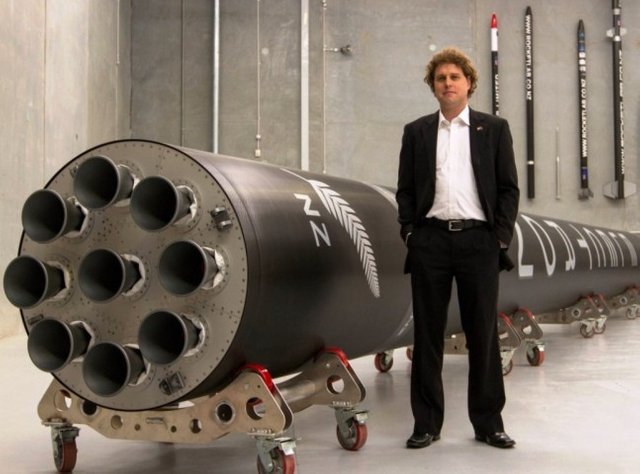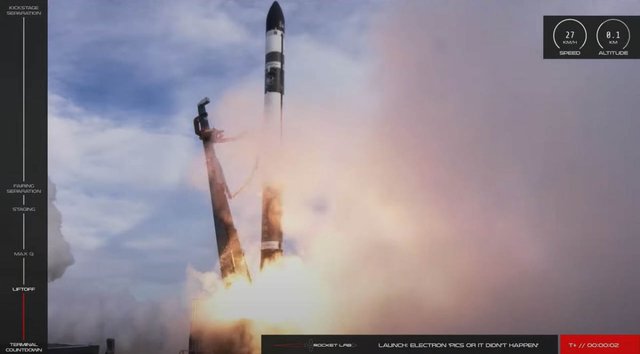Electron13 = Apollo13: Mission Failure, Payloads lost, Anomolies spotted in flight
Today, July 4, 2020, Rocket Lab launched its 13th Electron rocket into space which, unfortunately, failed to deliver its seven payloads into orbit.
Electron is a small orbital rocket that is capable of lifting 150-225 kg of payload into Low Earth Orbit (LEO).

Rocket Lab CEO, Peter Beck, stands next to an Electron Rocket under construction
From their private launch facility in New Zealand, Electron lifted off beautifully to begin its mission (titled "Pics or it didn't happen") of delivering 7 different Earth-imaging CubeSat satellites for three different customers, which are Canon, Planet, and Inspace.
The payloads were set to be deployed into a sun-synchronous orbit approximately 500km above the Earth. This type of orbit is near-polar and allows the entire planet to be imaged at the same time each day during a particular hour.
.gif)
This image shows heliosynchronous orbits viewed from above the North Pole
Right before Main Engine Cutoff and separation from the second stage, some people noticed what appeared to be some sort of damage done to the main fuselage that was visible from the camera onboard the booster. This just turned out to be a mission decal peeling away from the carbon-fiber fuselage and was unrelated to the problem which would occur just a couple minutes later.
A perfect liftoff preceding a failed payload deployment due to early 2nd stage cutoff.
A short time after the ignition of the 2nd stage engine, the video feed started to become a bit wonky. Around this time, you can see that the red glow of the engine nozzle begins to diminish very slightly as the rocket seemed to roll or pitch. It is difficult to tell what is going on with the orientation of the stage, but if you look closely at the position of the Earth in the camera, you see it change in relation to the fuselage.
This occurs right before the callout for the battery "hot-swap". Electron's nine Rutherford engines on the booster as well as the one on the 2nd stage have electric turbopumps that are powered by lithium-ion batteries. Once depleted, the system switches to a 3rd battery, then ejects the two dead batteries in order to reduce mass.
The callout for battery hot-swap never happens because they lost the video feed right before this happened. The mission commentator then comes on to say that they lost the video feed but still have telemetry data and that everything appears to be working normally. However, if you look closely at that telemetry data closely, you will see that it was NOT normal. The stage had lost all thrust. The speed indicator showed no acceleration, which indicates that there was no more thrust needed to accelerate the craft. The altitude data still shows the stage was climbing, but shortly thereafter found its apogee and began descending. After passing apogee (the highest altitude in a trajectory), you see the speed indicator once again show some acceleration. Unfortunately, this is the acceleration caused by the force of gravity rather than the force of the engine's thrust.
Because they lost thrust before reaching orbital velocity, we can conclude that the 2nd and 3rd stage (kick-stage), along with the payloads re-entered Earth's atmosphere and were destroyed by the aerodynamic forces and heating.
You can watch the full launch webcast here.

This is an excellent example of handling failure with honesty, accountability, and humility.